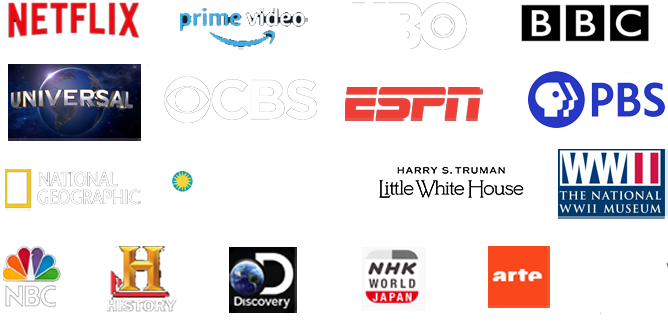This 1971 film “Lifeline” (alternate title “Lifeline in Space”) was produced by the US Air Force and directed by Con Pederson for Graphic Films. It uses well-designed conceptual art and simple yet highly effective animation to present a hypothetical look at the future of space travel, space stations, and aeronautics technology. Founded during WWII, Graphic Films was founded by former Disney animator and USC professor Lester Novros. It produced a wide range of industrial films for the U.S. government and is credited with helping visualize and present the theoretical technology behind space travel, that helped inspire the Mercury, Gemini and Apollo programs. (Note: this film was released in 1971, however it likely predates the 1970s as the U.S. Air Force’s Manned Space Flight Program and the Manned Orbiting Laboratory space station were essentially curtailed by the time this film was released.)
Opening titles: The seal of the Department of the Air Force. “The United States Air Force Presents, Lifeline, Aerospace Logistics Tomorrow” (0:09). An animated illustration of the earth from outer space. A slow pan across the stars reveals a collection of satellites (0:30). Inside one of the imagined satellites, animated astronauts sit at control panels. Experimental spacecraft. A distant crater houses a space station (1:18). On the surface of a distant planet, an “ALOMAR” factory and a series of rocket launchpads (2:20). A mission control crew moves a rocket into position, working in a command center on computers and video monitors (2:33). A small vehicle is loaded onto the spacecraft (3:00). Blastoff from the space station. Imagined spacecraft travel in and out of the planet’s atmosphere. Inside a large warehouse with an automated assembly line style robotic manufacturing facility (3:22). A visualization of a large supercomputer and various data visualizations. Abstract dot matrix patterns and flashing numbers (4:21). An artist’s rendering of a display resembling a CRT radar monitor. An astronaut gazes at illuminated buttons and joysticks. Stars crossfade to planet Earth (5:27). A starscape. Limited animation of an astronaut’s hands on the flight controls as the craft reaches out toward another craft floating in space (6:08). The cargo is retrieved to a web-like space station that brings together a network of satellites (7:18). A spherical satellite design, and a pointed pencil-shaped craft. (7:45). A small piloted vehicle helps an astronaut work on a larger, prism-shaped craft. Narration discusses the disposal of space junk (8:19). Travelling through narrow quarters, robotic arms reach out to trim and repair equipment. A pan across a space station under construction (8:54). An astronaut pushes the throttle of a spacecraft, leading to a collision with space debris, and a quick response from mission control back on the ground (9:48). Computer screens blink and instrument panels illuminate as concerned faces look on (10:20). A stern faced astronaut gazes into the outer reaches of space at a spinning space pod. In pursuit, a probe latches onto and retrieves the spinning pod (11:06). The astronaut safely re-enters the spacecraft through an airlock passage (12:01). A small experimental spacecraft and a hoop-shaped ring-like station (12:34). End titles “Air Photographic and Charting Service (MATS) SFP-1140b” (13:05).
Note: There is a connection between this film and Stanley Kubrick’s “2001” — and astute viewers will likely recognize similarities in the featured spacecrafts. Graphic Films Corporation staff, including Con Pederson, Douglas Trumbull and Lester Norvos worked on 2001, and both Trumbull and Pederson are credited as special effects supervisors. Graphic Films got Kubrick’s attention for a movie entitled “To the Moon and Beyond” which screened in 70mm in a special domed Cinerama 360 theater at the 1964 New York World’s Fair. . That film depicted a sort of cosmic zoom from Earth out to an overall view of the universe and back again down to the atomic scale.
We encourage viewers to add comments and, especially, to provide additional information about our videos by adding a comment! See something interesting? Tell people what it is and what they can see by writing something for example: “01:00:12:00 — President Roosevelt is seen meeting with Winston Churchill at the Quebec Conference.”
This film is part of the Periscope Film LLC archive, one of the largest historic military, transportation, and aviation stock footage collections in the USA. Entirely film backed, this material is available for licensing in 24p HD, 2k and 4k. For more information visit http://www.PeriscopeFilm.com

